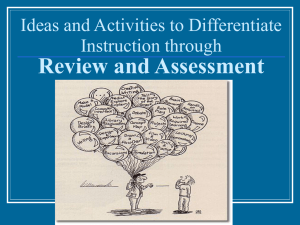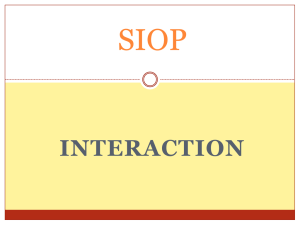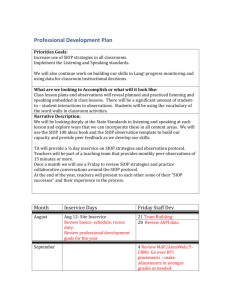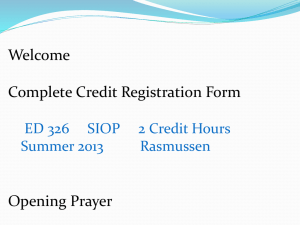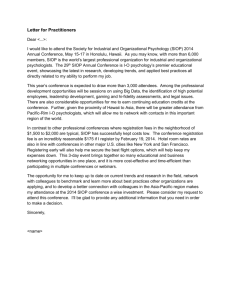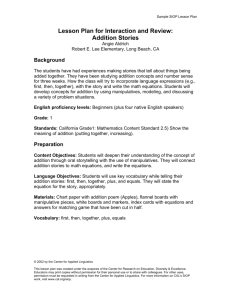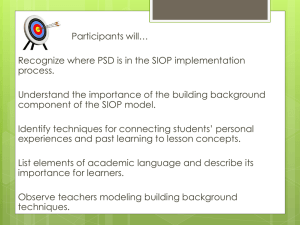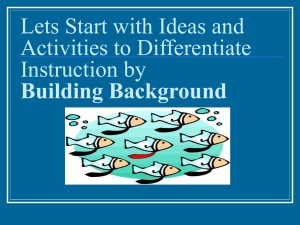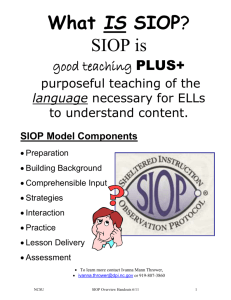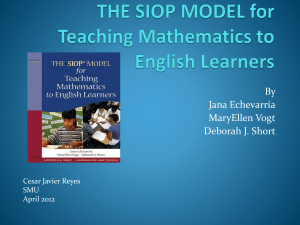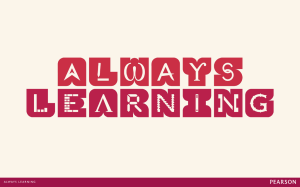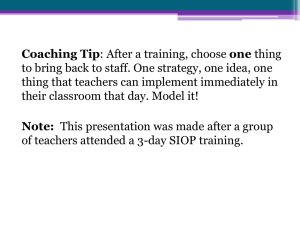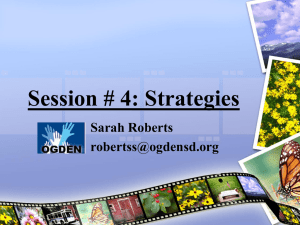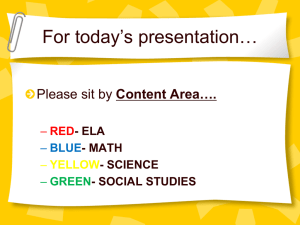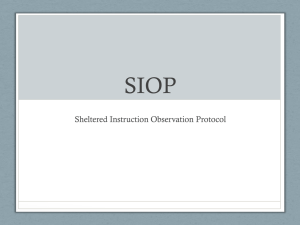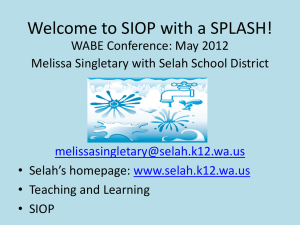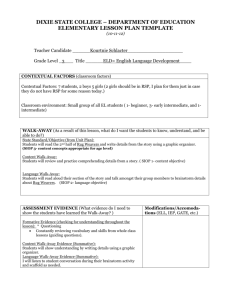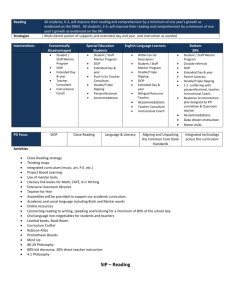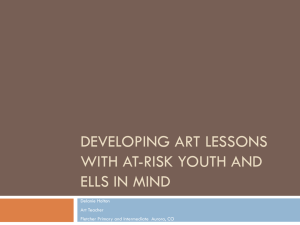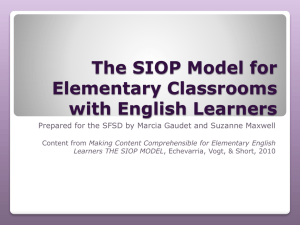The SIOP Model: practice/application - educ145-245
advertisement
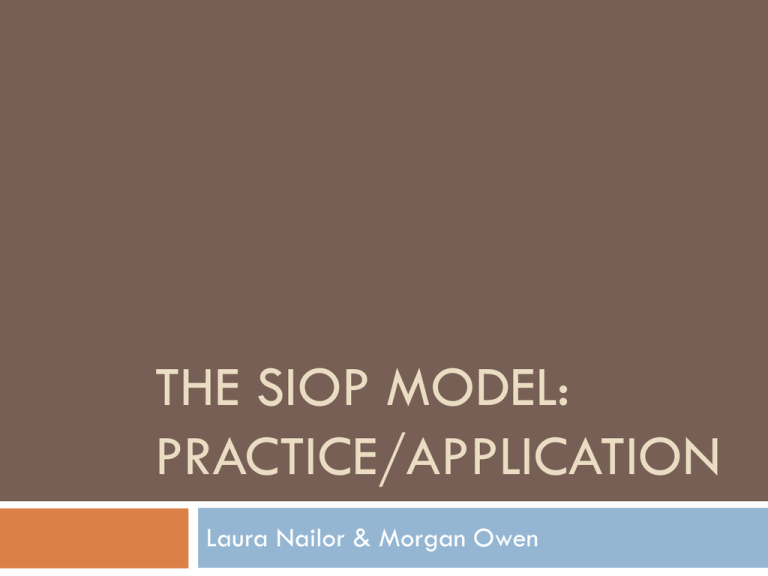
THE SIOP MODEL: PRACTICE/APPLICATION Laura Nailor & Morgan Owen Practice & application Content Objectives: Identify a variety of ways for students to enhance learning through hands-on practice. Create application activities that extend the learning in new ways and relate to language or content objectives. Practice & application Language Objectives: Design activities that integrate different language skills as students practice new content knowledge. Discuss the importance of linking practice and application activities to specific lesson objectives. Practice & application Practice & application Just like riding a bike… Training wheels Talking about experience Listening to others describe the experience Observing others Help from others Independent practice Practice & application Practice helps master skills Reading Writing Listening Speaking Proficiency depends on opportunities for comprehensible input and targeted output Practice & application Carefully choose activities in lesson Activities must support students’ progress Must target objectives Differentiation SIOP feature 20 Hands-on materials/manipulatives Makes practice more relative & meaningful Increases chances of mastery Enhances overall practice session Connects abstract to the concrete Hands-on materials AbStrAcT Concret e SIOP feature 20 Questions to consider How much material should be covered at once? How long in time should practice periods be? Answers to remember Small, meaningful amounts of material Short practice times SIOP feature 20 Questions to consider How often should students practice? How will students know how well they have done? Answers to remember New material Practice Old material Space frequently sessions Give specific feedback Kindergarten money activity part 1 While we are passing out materials discuss the following question with your partner: Can you remember the first time when you were able to purchase something with your own money? SIOP feature 21 Activities to apply content & language knowledge Discussing and “doing” make concepts concrete Involvement application in relevant & meaningful SIOP feature 21 What about errors? Level of development L1 Questions to consider: Does the error impair meaning? Are others making the same/similar mistakes? Is a mini-lesson necessary? Kindergarten money activity part 2 With a partner… Take turns rolling the money dice Distinguish the coin on the dice Place the dice in the corresponding tray Question and discuss decisions and other options We will know you are finished when the coins are all used. SIOP feature 22 Activities integrate all language skills Reading, writing, listening & speaking Read what we write Talk about what we read Listen to others talk about they read SIOP feature 22 L1 – speaking & listening acquired first L2 – reading & writing acquired first All skills are interconnected Different learning styles SIOP feature 22 Writing Reading Language Listening Speaking Kindergarten money activity part 3 Answer the writing prompt individually. Discuss with your partner once you are finished. SIOP feature 22 “…although all identified language objectives in a lesson need to be practiced & applied as the lesson advances, not all language skills that are practiced need to be tied to an objective…” P.143 Discussion Questions What adjustments & techniques can a teacher use to provide ELs with successful experiences while they read, write, listen, & speak about new information? What materials could you use in your classroom to meet all language skills? Think back to a lesson you have given or been a part of. What could have been done differently to ensure meaning for all learners? Conclusion Integrate 4 language components Practice & application are essential for mastery Patience with errors Enhance with hands-on activities Not all skills are linked to an objective Teaching scenarios Read the scenario, evaluate, and discuss the lesson Mr. Nguyen, page 144 Ms. Dowden, page 145 Miss Delgado, page 146 Teaching scenarios SIOP evaluation Hands-on materials & manipulatives Activities for language & content Integration of all language skills Mr. Nguyen 2 3 3 Ms. Dowden 4 4 4 Miss Delgado 1 1 2
